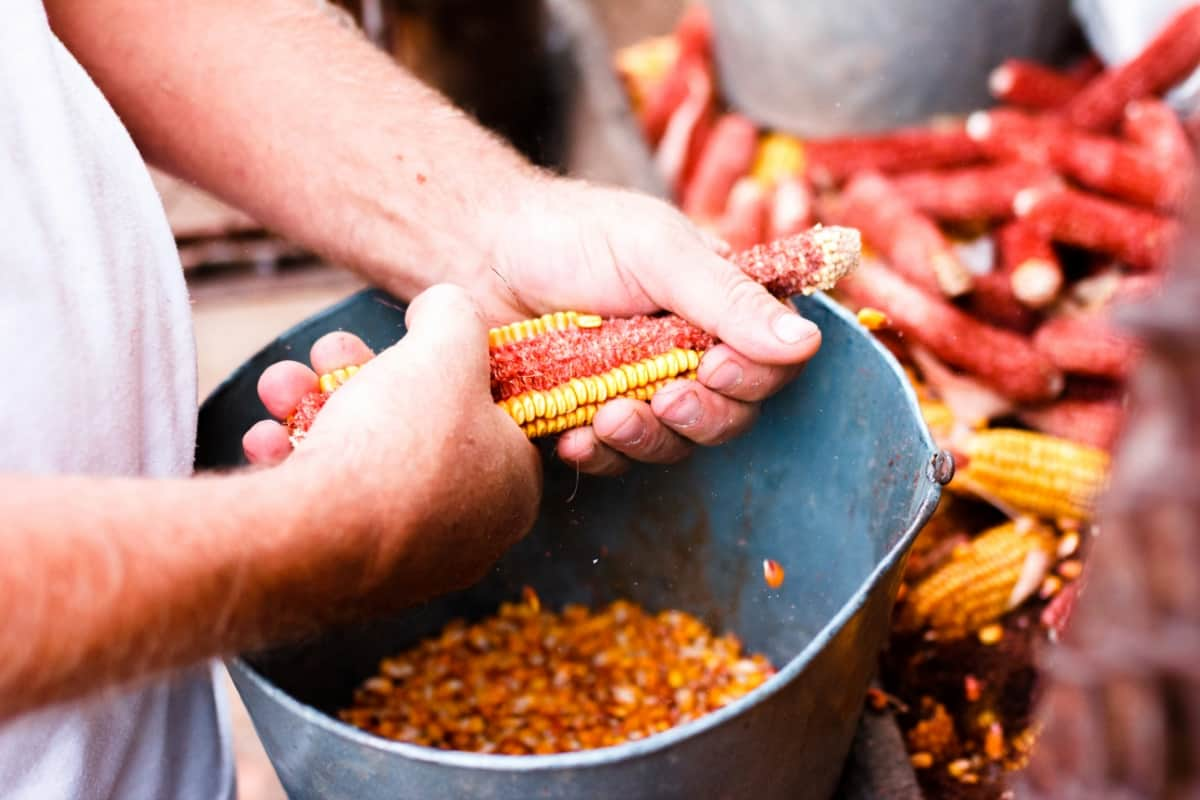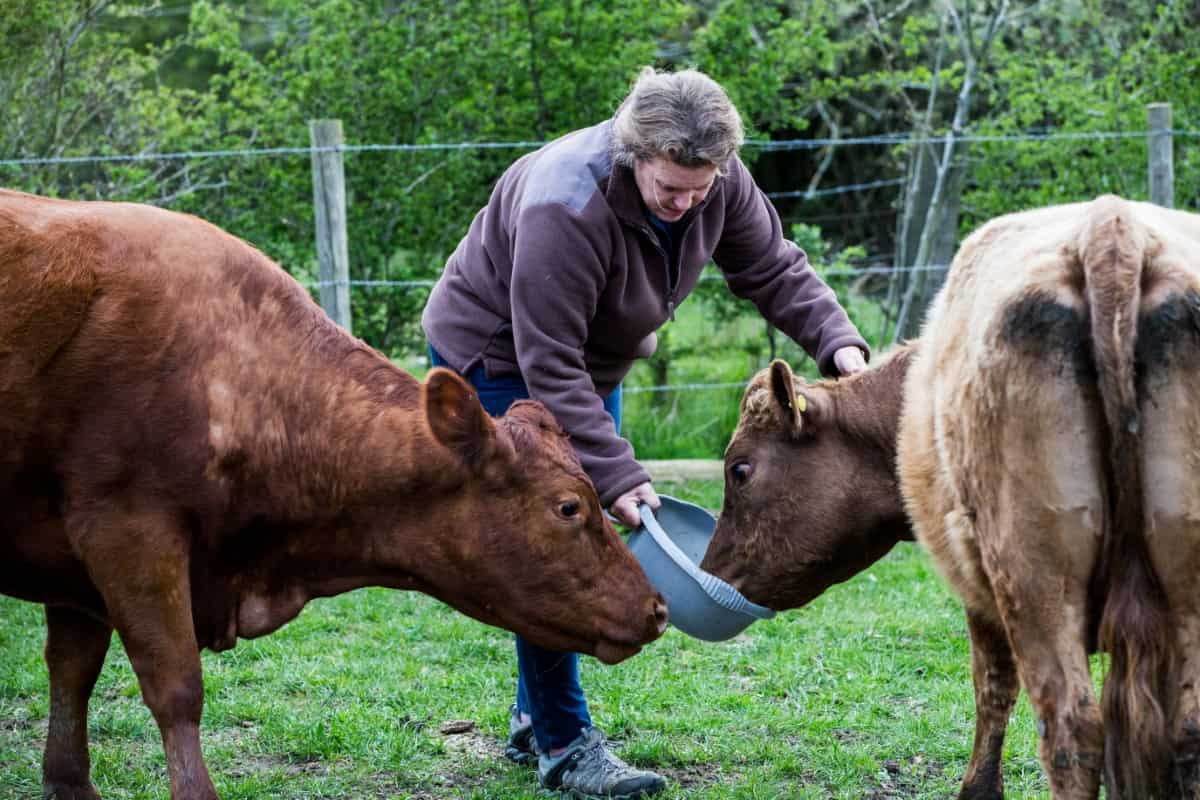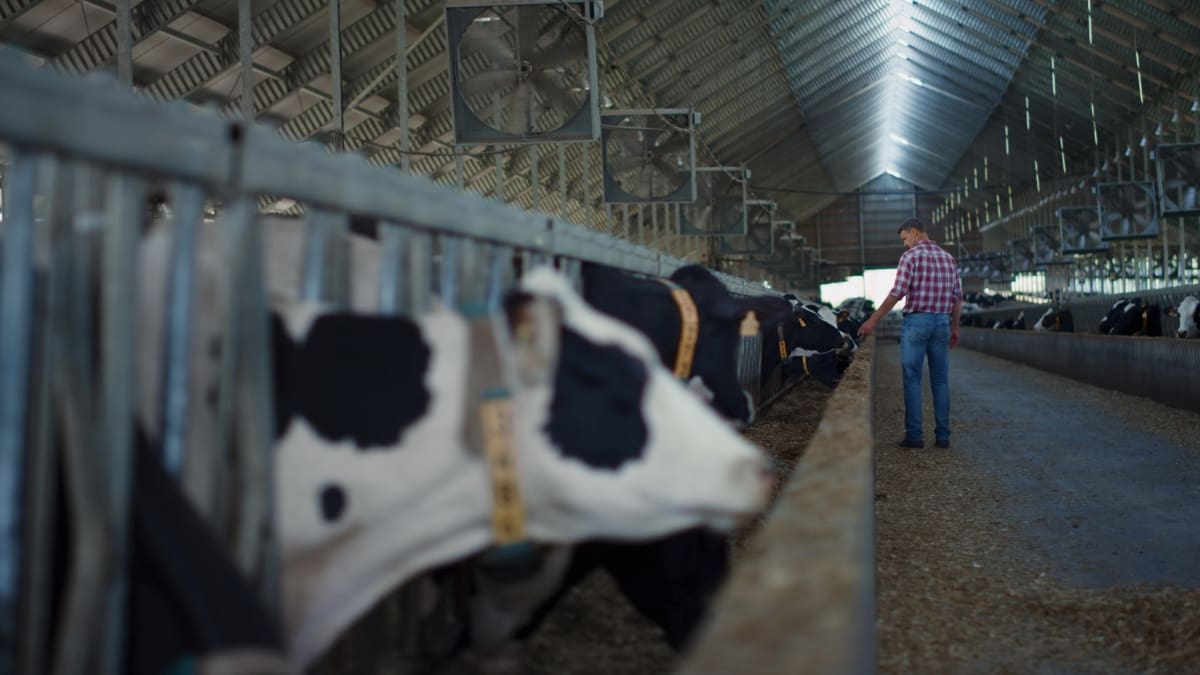Feeding corn to cattle has been a widely practiced method for years, providing various benefits for farmers and the cattle themselves. Corn is an excellent source of energy and a relatively cheap feed option. This detailed guide will outline the process of feeding corn to cattle, the necessary processing techniques, and the appropriate amount to give each cow. By understanding these factors, you can ensure that your cattle receive a balanced and nutritious diet.

Feeding Corn to Cattle
The Benefits of Corn in Cattle Feed
Corn is an essential part of many cattle feed formulations due to its high energy content, which helps support the growth and maintenance of cattle. It is also rich in carbohydrates, vitamins, and minerals, ensuring that cattle receive a well-rounded diet. Additionally, corn is a cost-effective feed option, as it is readily available and often less expensive than other feed options.
Processing Corn for Animal Feed
Before feeding corn to cattle, it is crucial to process the kernels to increase digestibility and nutrient availability. Several methods exist to process corn, including dry rolling, steam flaking, and high-moisture harvesting.
Dry Rolling
Dry rolling involves crushing corn kernels between steel rollers, breaking the outer kernel, and exposing the inner contents. This process increases the surface area of the corn, allowing for better digestion by the cattle. The corn should be rolled as close to feeding time as possible to maintain freshness and nutritional value.
Steam Flaking
Steam flaking is another effective method of processing corn for cattle feed. In this process, corn kernels are exposed to steam before being rolled, which helps to gelatinize the starch within the kernel. This increases the digestibility of the starch, providing more energy for the cattle.
High-Moisture Harvesting
High-moisture harvesting involves harvesting the corn at a higher moisture content, typically around 25-30%. The harvested corn is then stored in airtight structures or bags, which allows for fermentation to occur. The fermentation process improves the digestibility of the corn and preserves its nutritional value.
Determining the Right Amount of Corn for Cattle
The amount of corn to feed cattle depends on several factors, including the animal’s breed, age, weight, and activity level. The nutritional needs of cattle also vary depending on their purposes, such as milk production, meat production, or maintenance.
Growing Cattle
Growing cattle require more energy and nutrients than mature cattle. Depending on their age and weight, growing cattle may need 5-20 pounds of corn daily. It is essential to monitor their growth and adjust their feed intake accordingly.
Lactating Cows
Lactating cows have increased energy requirements to produce milk. As a result, they typically need between 12-24 pounds of corn per day, depending on their milk production level. It is vital to balance corn with other feed sources, such as forage and protein supplements, to ensure a well-rounded diet.
Beef Cattle
Beef cattle require a high-energy diet to promote weight gain and muscle development. On average, beef cattle may consume 10-20 pounds of corn daily. Feeding corn at a higher percentage of their diet can help to increase marbling and improve the overall quality of the meat.
In case you missed it: Tips for Low-Stress Cattle Handling

Combining Corn with Other Feed Sources
Combining corn with other feed sources is essential to provide a balanced diet for cattle. Forages like hay, grass, and pasture should make up a big part of the food to make sure that the animal gets enough fiber. Protein supplements, like soybean meal, canola meal, or cottonseed meal, may also be necessary to meet the cattle’s protein requirements.
Forage
Forage is a crucial component of a cattle’s diet, providing necessary fiber and roughage for proper rumen function. Forage options include hay, silage, and grazing pastures. When incorporating corn into the diet, it is essential to balance the corn-to-forage ratio to prevent digestive issues, such as acidosis.
Protein Supplements
While corn is a good energy source, it is relatively low in protein. So, when giving corn to cattle, it is often necessary to give them extra protein. Common protein sources include soybean meal, canola meal, cottonseed meal, and dried distillers’ grains. The appropriate protein supplement and amount will depend on the specific nutritional needs of the cattle.
Minerals and Vitamins
Cattle require essential minerals and vitamins for optimal health and productivity. Mineral and vitamin requirements vary depending on the cattle’s breed, age, and purpose. Commonly supplemented minerals include calcium, phosphorus, magnesium, potassium, and trace minerals like copper, zinc, and selenium. Vitamins A, D, and E are also important for cattle health. A well-balanced mineral and vitamin premix can be incorporated into the feed to ensure that cattle receive the necessary nutrients.
Monitoring Cattle Health and Performance
It is crucial to monitor the health and performance of cattle when feeding corn. Regularly observing cattle for signs of digestive issues, weight changes, and overall health can help identify any potential problems with their diet. Adjustments to the feed ration or processing methods may be necessary to address any issues.
Body Condition Scoring
Body condition scoring (BCS) is a useful tool for assessing cattle’s overall health and nutritional status. Body composition score (BCS) is an indirect measure of fat covering a cow’s body, scored on a scale of 1 (emaciated) to 9 (obese). A score of 5-6 is considered optimal for most cattle. Regularly monitoring BCS can help identify any nutritional imbalances or deficiencies in the diet.
Feed Efficiency
Feed efficiency measures how efficiently cattle use feed to gain weight or produce milk. Monitoring feed efficiency can help identify potential issues with the diet, such as inadequate energy or protein levels. The feed ration or processing methods can be adjusted to improve feed efficiency and overall cattle performance.
In case you missed it: How to Control and Treat Pasture Bloat in Cattle

Conclusion
Feeding corn to cattle can be an effective and cost-efficient method for providing energy and nutrients to your livestock. You can ensure that your cattle receive a balanced and nutritious diet by understanding the proper processing techniques, determining the right amount of corn for each cow, and combining corn with other feed sources. Regularly monitoring cattle health and performance will help identify any potential issues with their diet and make necessary adjustments to optimize their well-being and productivity.
- Feed Your Flock for Less: Top 10 Tips to Save on Chicken Feed
- Ultimate Guide to Ossabaw Island Hog: Breeding, Raising, Diet, and Care
- Hatching Answers: The Top 10 Reasons Your Chickens Aren’t Laying Eggs
- Eggs and Economics: Breaking Down the Cost of Raising Backyard Chickens
- Defend Your Greens: Proven Methods to Keep Iguanas Out of Your Garden
- Ultimate Guide to Cinnamon Queen Chicken: A Comprehensive Guide for Beginners
- Ultimate Guide to California Tan Chicken: Breeding, Raising, Diet, Egg-Production and Care
- Ultimate Guide to Marsh Daisy Chicken: Breeding, Raising, Diet, and Care
- 10 Types of Chicken Farming Businesses You Can Start for Profits